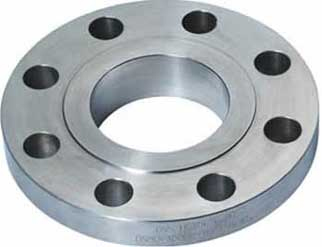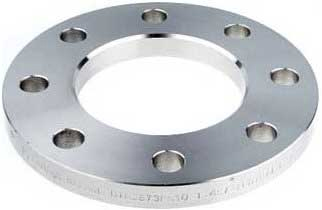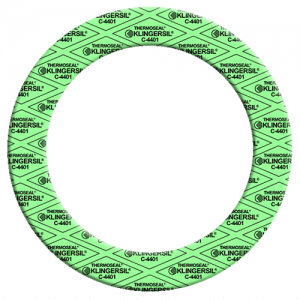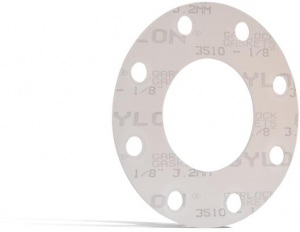When sealing raised or flat face flanges, there are two choices of gasket shape: ring-type or full-face. Each has its own advantages, so you should know which will best suit your application before ordering and installing. First, let's discuss the types of flanges in which gaskets are installed.
Flange Faces
Different types of flange faces are used as the contact surface to seat the sealing gasket materials. ASME B16.5 and B16.47 define various types of flange facings, including the raised face, the large male and female facings which have identical dimensions to provide a relatively large contact area.
Raised Face (RF) Flanges

The purpose of a RF flange is to concentrate more pressure on a smaller gasket area and thereby increase the pressure containment capability of the joint. Diameter and height are in ASME B16.5 defined, by pressure class and diameter. Pressure rating of the flange determines the height of the raised face.
Flat Face (FF) Flanges

Flat face flanges are never to be bolted to a raised face flange. ASME B31.1 says that when connecting flat face cast iron flanges to carbon steel flanges, the raised face on the carbon steel flange must be removed, and that a full face gasket is required. This is to keep the thin, brittle cast iron flange from being sprung into the gap caused by the raised face of the carbon steel flange.
Ring-Type Gasket

When specifying a ring type gasket only three measurements are needed: ID (which corresponds to the pipe bore), OD (which is the same is the OD of the raised face), and gasket thickness.
Full-Face Gasket

Specifying a full-face gasket requires the ID (same as the pipe bore), the OD (same as the flange OD), bolt circle diameter (the diameter on which all the bolt hole centers are located), number of bolt holes (and spacing if they’re not be regular – which would be very unusual for a flange), and gasket thickness.
Finding the Bolt Circle Diameter
While ID and OD can be measured with calipers or even a measuring tape, this dimension is harder to determine.
1. Pick two holes diametrically opposite. One we’ll call left hole, the other will be right hole.
2. Measure from the outer edge of left hole, (the side nearest the flange OD) to the inner edge of right hole, (the side nearest the bore). That dimension is the bolt circle diameter.
3. As a check, measure a second pair of bolt holes and make sure the distance is the same. Remember the rule: outer edge to inner edge.
If you have any further questions on when you should use a ring-type gasket or a full-face gasket, our Engineering Department is always here to answer any of your questions. Please do not hesitate to contact us for assistance specifying which gasket is best for your specific application.





